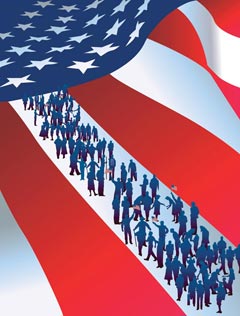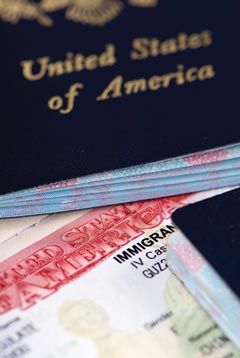|
|
|
ADVERTISEMENTS
|
|
PREMIUM
- HAPPY HOLIDAYS!
- Siliconeer Mobile App - Download Now
- Siliconeer - Multimedia Magazine - email-Subscription
- Avex Funding: Home Loans
- Comcast Xfinity Triple Play Voice - Internet - TV
- AKSHAY PATRA - Bay Area Event - Sat. Dec 6
- Calcoast Mortgage - Home Loans
- New Homes in Silicon Valley: City Ventures - Loden Place - Morgan Hill
- Bombay to Goa Restaurant, Sunnyvale
- Buying, Sellling Real Estate in Fremont, SF Bay Area, CA - Happy Living 4U - Realtor Ashok K. Gupta & Vijay Shah
- Sunnyvale Hindu Temple: December Events
- ARYA Global Cuisine, Cupertino - New Year's Eve Party - Belly Dancing and more
- Bhindi Jewellers - ROLEX
- Dadi Pariwar USA Foundation - Chappan Bhog - Sunnyvale Temple - Nov 16, 2014 - 1 PM
- India Chaat Cuisine, Sunnyvale
- Matrix Insurance Agency: Obamacare - New Healthcare Insurance Policies, Visitors Insurance and more
- New India Bazar: Groceries: Special Sale
- The Chugh Firm - Attorneys and CPAs
- California Temple Schedules
- Christ Church of India - Mela - Bharath to the Bay
- Taste of India - Fremont
- MILAN Indian Cuisine & Milan Sweet Center, Milpitas
- Shiva's Restaurant, Mountain View
- Indian Holiday Options: Vacation in India
- Sakoon Restaurant, Mountain View
- Bombay Garden Restaurants, SF Bay Area
- Law Offices of Mahesh Bajoria - Labor Law
- Sri Venkatesh Bhavan - Pleasanton - South Indian Food
- Alam Accountancy Corporation - Business & Tax Services
- Chaat Paradise, Mountain View & Fremont
- Chaat House, Fremont & Sunnyvale
- Balaji Temple - December Events
- God's Love
- Kids Castle, Newark Fremont: NEW COUPONS
- Pani Puri Company, Santa Clara
- Pandit Parashar (Astrologer)
- Acharya Krishna Kumar Pandey
- Astrologer Mahendra Swamy
- Raj Palace, San Jose: Six Dollars - 10 Samosas
CLASSIFIEDS
MULTIMEDIA VIDEO
|
|
|
|
|
COMMUNITY:
Immigration Reform: A New Bill in Congress
Rep. Luis V. Gutierrez, D-Ill., has introduced a bill for immigration reform that includes a provision for legalization of undocumented persons in the United States estimated at 12 million. Attorney Mahesh Bajoria provides an overview.

On Dec. 15, 2009, Rep. Luis V. Gutierrez, D-Ill., introduced legislation titled Comprehensive Immigration Reform for America’s Security and Prosperity Act of 2009. The comprehensive immigration bill contains many hot topics. Among the most sought after reform is the provision for legalization of undocumented persons in the United States that amount to an estimated 12 million.. This bill is expected to undergo many changes and revisions before it is passed into law.
Here is a summary of the Comprehensive Immigration Reform for America’s Security and Prosperity Act of 2009.
Title I. Border Security, Detention and Enforcement. The bill contains provisions which seek to enhance border security and achieve effective immigration enforcement. The bill seeks to improve conditions of detentions, and to protect U.S. citizens, lawful permanent residents, and vulnerable population. The bill also seeks to increase protections during enforcement activities by making provisions which seek to ensure due process and other protections during enforcement activities.
Title II. Employment Verification. The bill creates an employment verification system for employers to verify the work authorization of new hires. The new system is to be rolled out in phases, and will eventually apply to all employers and all new hires. The employment verification system creates civil penalties for employers who do not comply and serious criminal penalties for knowingly hiring unauthorized workers. It includes privacy protections, anti-discrimination provisions and allows individuals to register with the Social Security Administration.
Title III. Visa Reforms.
Family and employment backlog reduction: The bill contains several measures designed to reduce long backlogs in family and employment immigrant and nonimmigrant visa processing.
It permits the “recapture” of unused employment-based visas and family-sponsored visas from fiscal years 1992-2008 and allows future unused visa numbers to roll over to next fiscal year.
It exempts immediate relatives from the annual cap on the number of immigrant visas, and increases the number of visas which may be issued per country per year.
It permits qualified workers eligible for an employment based petition to receive work authorization until a visa becomes available.
It exempts from skilled worker numerical cap U.S. educated foreign nationals who receive science, technology, engineering and math degrees and other critical workforce graduates.
It exempts foreign nurses from current numerical limitations and provides new programs to fund and develop domestic nursing supply and encourage training of other domestic health care professionals.
Promotion of family unity: The bill includes various measures designed to keep U.S. families together.
It reclassifies spouses and children of lawful permanent residents as immediate relatives.
It ensures that immediate relatives may continue to pursue their immigration petitions even if the U.S. citizen or the legal permanent resident who petitions them dies.
It provides the government with greater discretionary authority to waive unlawful presence and other bars in order to reunite families.
It provides relief for orphans and widows of U.S. citizens and legal immigrants by allowing them to retain eligibility for waivers and other considerations that would have been available to them at the time of the petitioner’s death.
It permits immigration judges greater discretion in determining eligibility requirements for long-term lawful permanent residents seeking cancellation of removal.
It includes protection for refugees, parolees or asylees by prohibiting the removal of any individual who fled his or her homeland for fear of persecution before the age of twelve and was subsequently admitted into the United States as a parolee or refugee or was granted asylum in the United States.
It permits an immigration judge to decline to order the removal of the parent of a U.S. citizen child if the judge determines that removal would not be in the child’s best interests.
It revises the eligibility requirements for sponsorship of immigrants by reducing the level of support required from 125 percent of poverty level to 100 percent of poverty level.
Preventing future illegal immigration: The bill creates the Prevent Unauthorized Migration Visa that seeks to provide for safe, humanitarian migration during the three-year transition period before the enactment of recommendations made by the new Labor Commission.
It creates 100,000 PUM visas annually, for 3 years, to persons from those countries which represent at least 5 percent of the total unauthorized migration population within the United States for the past five years and will be distributed on a percentage basis through a lottery system.
Individuals may apply to the lottery if they are not present in the United States at the time of filing, do not have other family or employment based means to immigrate, submit to criminal background checks, and have completed less than four years of a college degree program.
Individuals awarded visas will be admitted to the United States as conditional residents and may petition for legal permanent status after three years.
 Title IV. Legalizing Undocumented Immigrants. The bill creates a legalization program for qualified undocumented immigrants (and their spouses and children). Title IV. Legalizing Undocumented Immigrants. The bill creates a legalization program for qualified undocumented immigrants (and their spouses and children).
Those who qualify would receive a conditional nonimmigrant visa which is valid for six years. This visa allows legalized immigrants with work and travel authorization and protection from removal.
To qualify, an applicant must:
(a) Establish they have been in the U.S. illegally before December 15, 2009.
(b) Attest to having made contributions to the U.S. through employment, education, military service, or other volunteer/community service (with exemptions for minors, persons with disabilities, the elderly, or other unusual circumstances).
(c) Pay an application fee and a $500 fine.
(d) Not have any convictions for a felony or for three or more misdemeanors.
Certain immigrants who are in removal proceedings, facing removal, or ordered to depart voluntarily would be able to apply for legalization.
All bars related to undocumented status — such as using a false Social Security number — will be waived (but security and criminal bars cannot be waived).
Qualified conditional nonimmigrants and their spouses and children will be able to apply for lawful permanent resident status (green card) and eventual citizenship.
The bill assures that no green cards may be issued under this program earlier than six years after the date of enactment unless existing immigrant backlogs have been cleared before that time.
Provides that immigrants who adjust from a conditional nonimmigrant visa (including dependents) to lawful permanent resident status shall not be counted against the worldwide numerical visa caps.
DREAM Act: Undocumented individuals who were brought to the U.S. before the age of 16 will apply for legal status through the same program outlined above.
Eligible persons will not have to pay fines.
Such persons will be eligible for accelerated LPR status upon graduation from high school, and completion of two years of college, military service, or employment. Persons granted LPR status under this provision will be eligible for naturalization three years after the date LPR status is granted.
Individual states will be permitted to determine whether undocumented students can benefit from in-state tuition rates.
 Title V. Strengthening America’s Workforce. The bill creates an independent federal Commission on Immigration and Labor Markets that will develop employment based-immigration policies for economic growth, competitiveness, and wage and labor protections, and will create a federal research agenda on the economic impact of immigration. Title V. Strengthening America’s Workforce. The bill creates an independent federal Commission on Immigration and Labor Markets that will develop employment based-immigration policies for economic growth, competitiveness, and wage and labor protections, and will create a federal research agenda on the economic impact of immigration.
Security and prosperity account: Many of these fees and fines generated by new programs within this bill will be deposited in a new Security and Prosperity Account, which will be used to assist state based worker training programs etc.
American Worker Recruit and Match System: The bill establishes the American Worker Recruiter and Match System, a searchable database tied into the state workforce agency networks which will match employers with qualified individuals who post their profiles on the website.
Revisions to Temporary Worker Programs: The bill requires written notice of terms of employment to ensure that foreign recruiters do not mislead prospective employees. It requires employers to identify recruiters working on their behalf to Secretary of labor, to give notice of possible violations, and to be liable for recruitment violations.
The bill expands requirements for recruiting American workers before hiring foreign nationals, increases authority for the Department of Labor to investigate potential fraud and abuse, authorizes annual audits of employers who rely heavily on H-1B program and increases penalties for violations.
The bill authorizes DHS to audit L-1 visa participants. Penalties will be assessed for violations of the provisions of the L-1 visa program.
H-2 Visa Program: The bill establishes stricter requirements for recruitment of American workers and prohibits participation of employers who have conducted a mass lay-off in the past year and increases worker protections.
EB-5 Investor Visas: The bill permanently reauthorizes the EB-5 visa program and expands it to make available 10,000 visas.
It permits expedited processing for an additional $2,500 fee.
It expands the current definition of Targeted Employment Area to include among other characteristics rural areas, areas of high unemployment, counties with 20 percent or more population decrease since 1970.
It authorizes DHS to study and recommend new strategies for job creation. It creates a new venture capitalist visa.
Title VI. Integration of New Americans.
Immigration fees: The bill ensures that future increase requests receive closer scrutiny and makes citizenship more accessible and affordable.
Improving the Naturalization Process and Integration: The bill seeks to encourage citizenship among immigrant communities by
(a) Providing for uniform administration of the naturalization exam.
(b) Promoting citizenship of the elderly by adjusting the age requirements for English language exemptions.
(c) Requiring timely response on background checks and evaluating their efficiency.
(d) Creating a grant program for community based organizations to promote and help immigrants prepare for citizenship.
(e) Creating incentives for English language acquisition programs.
(f) Celebrating the citizenship of new Americans and encouraging them to integrate into their communities.
This article is a summary of Comprehensive Immigration Bill. The bill is yet to be passed into law and should not be relied on until it is passed. Consult your legal advisor for correct interpretation of the provisions of the bill.
|
 Mahesh Bajoria is an attorney practicing law in Fremont, Calif. He can be reached by email at mahesh@bajorialaw.com. Mahesh Bajoria is an attorney practicing law in Fremont, Calif. He can be reached by email at mahesh@bajorialaw.com.
|
|
|
|
|
|